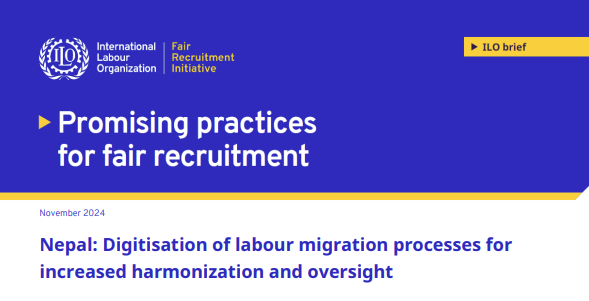Universities in East and Horn of Africa Unite to Launch Regional Labour Migration Knowledge Hub
Posted at September 24th 2025 12:00 AM | Updated as of September 24th 2025 12:00 AM
Region/Country :
|Themes : , ,
Ecuadorian officials strengthen capacity on fair recruitment in labour migration programs
Posted at September 12th 2025 12:00 AM | Updated as of September 12th 2025 12:00 AM
Region/Country :
|Themes : , , ,
Somalia takes major step towards strengthening fair recruitment and labour governance
Posted at August 14th 2025 12:00 AM | Updated as of August 14th 2025 12:00 AM
Region/Country :
|Themes : , , , ,
Fair Recruitment Initiative global conference on fair recruitment sets agenda for the next decade
Posted at June 4th 2025 12:00 AM | Updated as of June 4th 2025 12:00 AM
Region/Country : ,
|Themes : ,
Strengthening Solidarity and Safeguarding Rights – A Peer Learning Journey Between Ghana and Nigeria
Posted at April 8th 2025 12:00 AM | Updated as of April 8th 2025 12:00 AM
Region/Country : ,
|Themes : , , , ,
National consultation on strengthening labour migration governance through fair recruitment in Ghana: Developing a national roadmap
Posted at September 6th 2024 12:00 AM | Updated as of September 6th 2024 12:00 AM
Region/Country : ,
|Themes : ,



